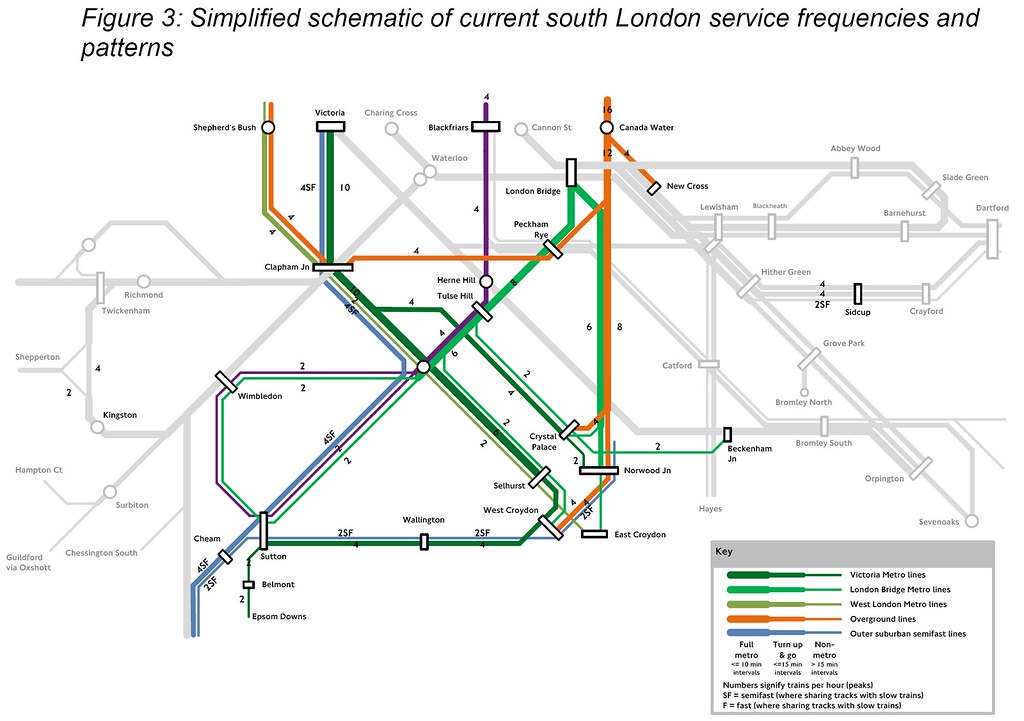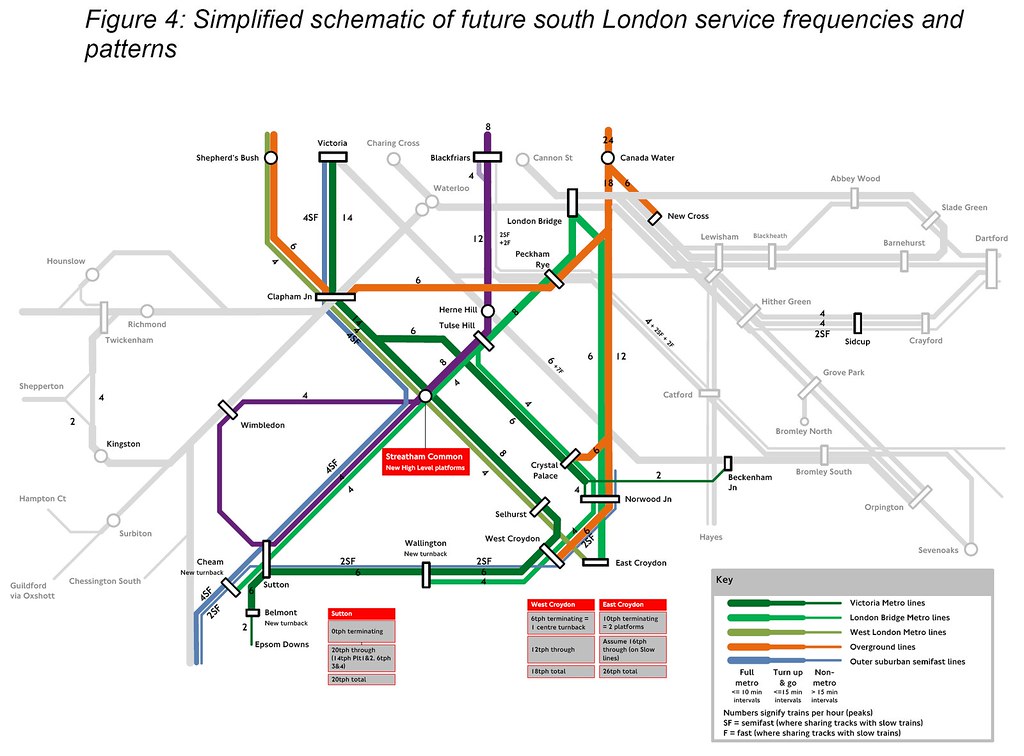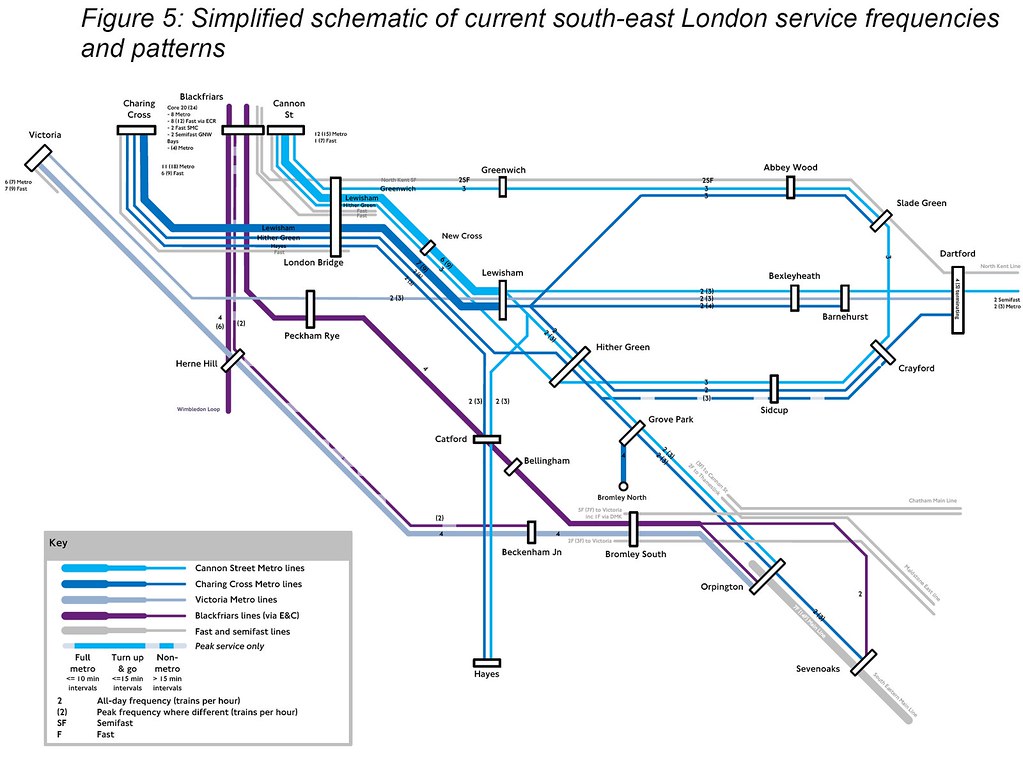South London Metroisation
Transport for London have submitted their proposal for taking over more of the railway lines in South London that currently do not come under their control. The following text which focuses on six key points and images come directly from the report:
http://content.tfl.gov.uk/rail-devol...-narrative.pdf
Predictable services
- Identifiable “lines” that operate all day every day, with consistent stopping patterns and even intervals
- Turn-up-and-go frequencies maintained from early morning to late evening
- Additional peak services to meet demand maintain connectivity
- This builds confidence in the network
Better connections
- Higher frequency train services, including off-peak improvements
- Short wait times at stations, so no need to plan journeys in advance
- This is particularly useful for those making local connections across south and south east London, who currently have to plan around lots of half hourly services and long waits
- New and upgraded interchanges to boost connectivity, not just to / from central London (eg Lewisham)
More capacity
- Longer trains to take full advantage of previous platform lengthening schemes
- More consistent train lengths at the peaks
- Metro-style rolling stock on inner suburban services
- Infrastructure and/or signalling investment to relieve key bottlenecks on tracks and at junctions that currently constrain both inner and outer suburban services
- Transfer of non-passenger paths from the passenger peaks to other times of day
- Timetables finely tuned where every second counts
Shorter journey times
- Higher performance trains that accelerate and brake faster, and have plenty of room to move around so that boarding and alighting is faster
- Staff actively managing dwell times at key platforms bring urgency and consistency to timetables
- Investment in signalling enhancements
- New infrastructure at key bottlenecks to reduce the need for padding in the timetable
Reliability
- Incentivise reliability within contracts as we have done for London Overground and the DLR
- Simplification of service patterns to reduce conflicts at junctions and mitigate against the cumulative impact of delays elsewhere
- Infrastructure investment to relieve key bottlenecks will allow more reliable services, both inner suburban and outer suburban
Better customer service
- All day station staffing with ticket barriers in operation
- Improved information provision
- Station and train deep cleans and refurbishment
- Better stations with consistent wayfinding
- Reliable ticket machines which sell both National Rail and TfL tickets
- Consistent and easily understood fares across the whole network
- More modern station facilities and shops
The outcomes could be as follows in the example of the local services out of Victoria:
- Frequency increased (from 14 to 22 trains per hour (tph), that is +8tph on the trunk)
- More capacity (+20 per cent)
- Journey time reduction of 17 per cent, of which dwell time would be reduced by 13 per cent and inter-station run time by 4 per cent.
The maps below show the illustrative service frequencies one could hope to achieve as a result of metroisation:
 Image sourced from Transport for London: http://content.tfl.gov.uk/rail-devol...-narrative.pdf
Image sourced from Transport for London: http://content.tfl.gov.uk/rail-devol...-narrative.pdf
 Image sourced from Transport for London: http://content.tfl.gov.uk/rail-devol...-narrative.pdf
Image sourced from Transport for London: http://content.tfl.gov.uk/rail-devol...-narrative.pdf
 Image sourced from Transport for London: http://content.tfl.gov.uk/rail-devol...-narrative.pdf
Image sourced from Transport for London: http://content.tfl.gov.uk/rail-devol...-narrative.pdf
 Image sourced from Transport for London: http://content.tfl.gov.uk/rail-devol...-narrative.pdf
Image sourced from Transport for London: http://content.tfl.gov.uk/rail-devol...-narrative.pdf